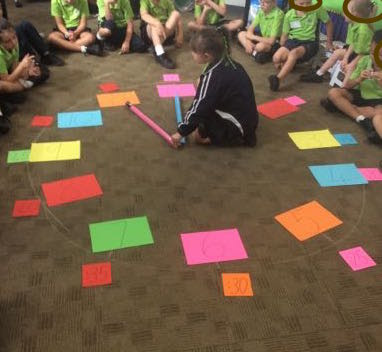Time is a difficult concept for children to understand because it isn't tens based.
There's 60 mins in and hour and half of that is 30 .... and it is so much easier when it is 10' s and 5's or 100's and 50's.
There's fractions halves and quarters... there's pasts and to's and it's a lot for children to take in. They require a foundation of understanding in all these areas before learning to tell the time, 'clicks'.
But... don't despair!
I believe a hands-on approach can help with understanding.
Draw a large circle on the whiteboard.
Next, mark that places for 12, 6, 3 and 9.
By this time, the children will begin working out what you are making.

Ask students to help you place the numerals on the clock face.
Notice the four main numbers are in a different colour.
The numerals on the 'past' side of the clock are pink.
The numerals on the "to' side of the clock are green.

Add the minute amounts (5, 10, 15, 20, 25, 30, etc.) around the outside of the clock.

Next, it's time to place the hands on the clock.
Ask children to make different times to fully understand their knowledge of telling the time.
















